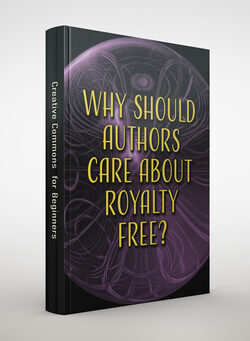 Just because artwork is free on the internet, doesn’t mean it’s free to use in your commercial project. As a book cover designer and video producer, I often have authors send me images that they found through Google search, on Wikipedia or even images they shot themselves. I won’t use any of these without carefully considering the following:
Just because artwork is free on the internet, doesn’t mean it’s free to use in your commercial project. As a book cover designer and video producer, I often have authors send me images that they found through Google search, on Wikipedia or even images they shot themselves. I won’t use any of these without carefully considering the following:
- Who took the picture or created the art/music?
- Is the copyright holder willing to let the work be used for commercial purposes?
- Can the media be altered?
- Are there visible faces in the image that would require model releases?
Often these questions can’t be answered easily, which is why I rely on stock media sites for most of my images and music. These sites do all the hard work for you. They demand excellence in their artists and keep copyright and model releases on file. Images cost anywhere from $1 to $100 and music starts at about $25 per track. Royalty free sites may cost more than free sites such as Flickr or Photobucket, but they make up for it with time-saving search functions and the peace of mind that comes with royalty free media. Once you understand the terms laid out for each royalty free site, you can apply these terms to any media purchased.
So what exactly is ROYALTY FREE?
Royalty free means the artist keeps the copyright but allows people to copy and distribute their work provided they are given credit. There may or may not be a fee to use the media. Some artists work on donation basis only.
Know your license rights. Under the Creative Commons License, the artist may impose any of the following conditions:
- Not for commercial use. This means you can use the image or music only for school projects, non-profit or editorial use, like a newspaper. Commercial usage includes all advertising you may do for your book (websites, trailers, newsletters, etc)
- Not for reprint or resale. This condition means you can’t reprint the image such as for a t-shirt, and resell it. Book covers are a grey area. Many artists allow their work for book covers, even though these will be resold. Check the artist’s terms carefully for this one.
- May not be altered. Some licenses do not allow changes to be made to the artwork. This could be as simple a change as cropping a picture or music track.
- Must give attribution. Attribution means to give credit for the work. This may be a credit line at the end of the trailer or a link on your website. Some artists are very particular about how they wish to be attributed, so it’s best to check their websites.
And don’t forget the models. If you want to use images you took on your vacation, be sure that you have written permission from anyone in the photo. Architecture falls under copyright laws as well, so be wary of using well-known buildings in your images. Finally, look for any trademark logos, license plates or addresses that could identify a specific person or corporation. These can often be erased with a photo editing software. Even tattoo art can be subject to copyright laws.
What does all this mean in the real world? It means that you may have to spend a bit more money to get stock video footage, photos and music for your trailer or website, but in the long run you will save yourself the hassle of possible copyright infringements. As an author, I am sensitive to copyright issues (as all authors should be). I would not want someone taking an excerpt from my book to use freely, and so I wouldn’t expect artists, photographers and musicians to work for free either.
Here are my favorite royalty-free image sites. Leave your favorites in the comments below.
123rf.com
istockphoto.com
Gettyimages.com
Depositphotos.com
Dreamstime.com
 Kim McDougall is the author of the Hidden Coven series and Revise to Write, Edit Your Novel, Get Published and Become a Better Writer. She is also the CEO and book designer at Castelane, For the Prose and the Program Coordinator for the Writers’ Community of York Region.
Kim McDougall is the author of the Hidden Coven series and Revise to Write, Edit Your Novel, Get Published and Become a Better Writer. She is also the CEO and book designer at Castelane, For the Prose and the Program Coordinator for the Writers’ Community of York Region.
